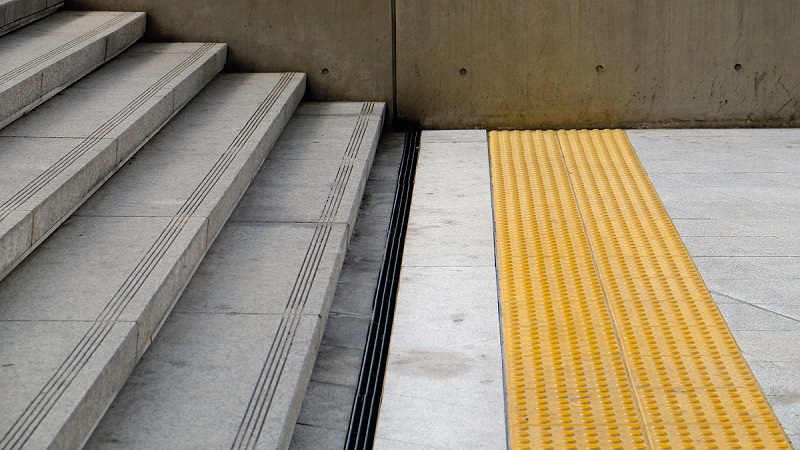The infrastructural element of tactile paving may go overlooked regarding accessibility and urban planning. However, these microscopic, textured ground surfaces are essential for enhancing blind people’s quality of life. Even though they usually go unnoticed by the sighted, tactile pavers are crucial for guiding and ensuring the safety of those with vision impairments in public spaces. The importance of tactile pavers and how they increase accessibility and inclusion in urban environments will be covered in this blog.
Navigation and Wayfinding
One of the primary functions of tactile pavers is to assist visually impaired individuals in navigation and wayfinding. These textured surfaces provide tactile cues that help users determine their location and the direction they need to take. For instance, truncated domes, a joint tactile paver, signal the presence of pedestrian crosswalks and intersections, guiding individuals safely across streets.
Identification of the Risk
Additionally, tactile pavers function as a warning system, alerting those who are blind to possible dangers or environmental changes. For example, they can show the edge of a railway platform, a set of steps, a ramp, or the existence of a drop-off. People who use canes or their feet can sense such changes and make the required modifications to prevent accidents by running their bats or feet over these textured surfaces.
Safe Environment-Specific Navigation
Tactile pavers are paramount in busy urban situations. These textured surfaces make it easier for people with vision impairment to move through complicated environments. Thanks to the tactile clues, they can follow pathways, find transportation platforms, and access other services independently, which promotes independence.
Inclusion and Accessibility
The position of tactile pavers shows a commitment to inclusivity and openness. It conveys that towns and urban communities, regardless of people’s capacity, focus on the requirements of all residents and vacationers. These parts are remembered for metropolitan preparation and configuration, making networks more open-minded and steady in different gatherings.
Adherence to Accessibility Guidelines
For accessibility norms and laws like the Americans with Disabilities Act (ADA) in the United States to be met, tactile pavers are crucial. By requiring tactile materials in certain areas, these guidelines guarantee that public spaces are accessible to everybody. The possibility of legal consequences for non-compliance highlights the importance of tactile pavers in urban planning.
Enhanced Safety
Tactile pavers give benefits to somewhere safe and secure that go past the visually impaired individuals. Moreover, they increment person-on-foot security for everyone. The material signs disclose regions more secure by advance notice located individuals of potential risks, similar to the edge of a railroad station.
The Universal Design Guidelines
The universal design principles, which emphasize making spaces and goods usable by people of all abilities, align with tactile pavers. When communities integrate tactile pavers into their infrastructure, they adopt a concept that benefits elders, persons with mobility issues, people who are blind or visually impaired, and parents using strollers.
Wrapping Up
Albeit material pavers are inconspicuous parts of our metropolitan surroundings, the distinction they make in the existence of the people who are visually impaired or outwardly debilitated is monstrous. Public regions are made more available and comprehensive for everybody because these finished surfaces offer urgent pointers for the route, risk ID, and security. We can gain critical headway toward building a future where everybody can explore their environmental elements securely and freely by recognizing the worth of material pavers and proceeding to remember them for the metropolitan turn of events.





